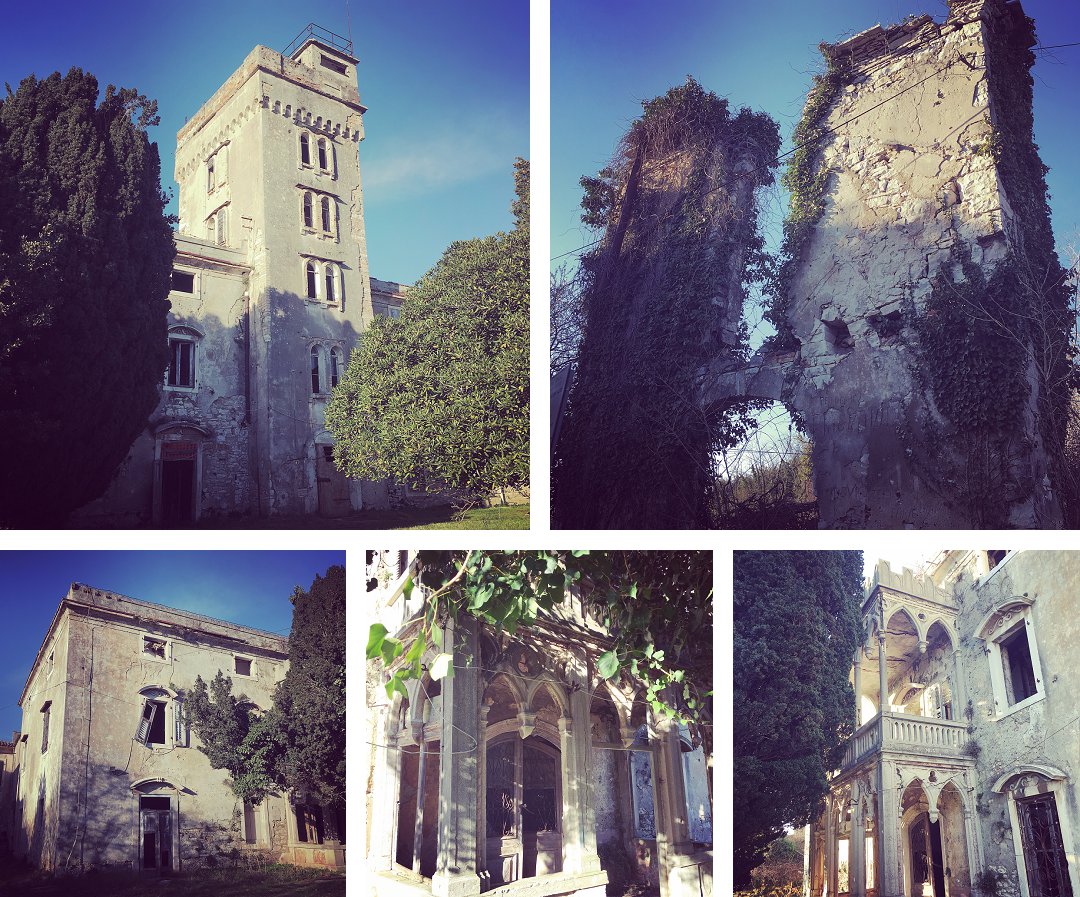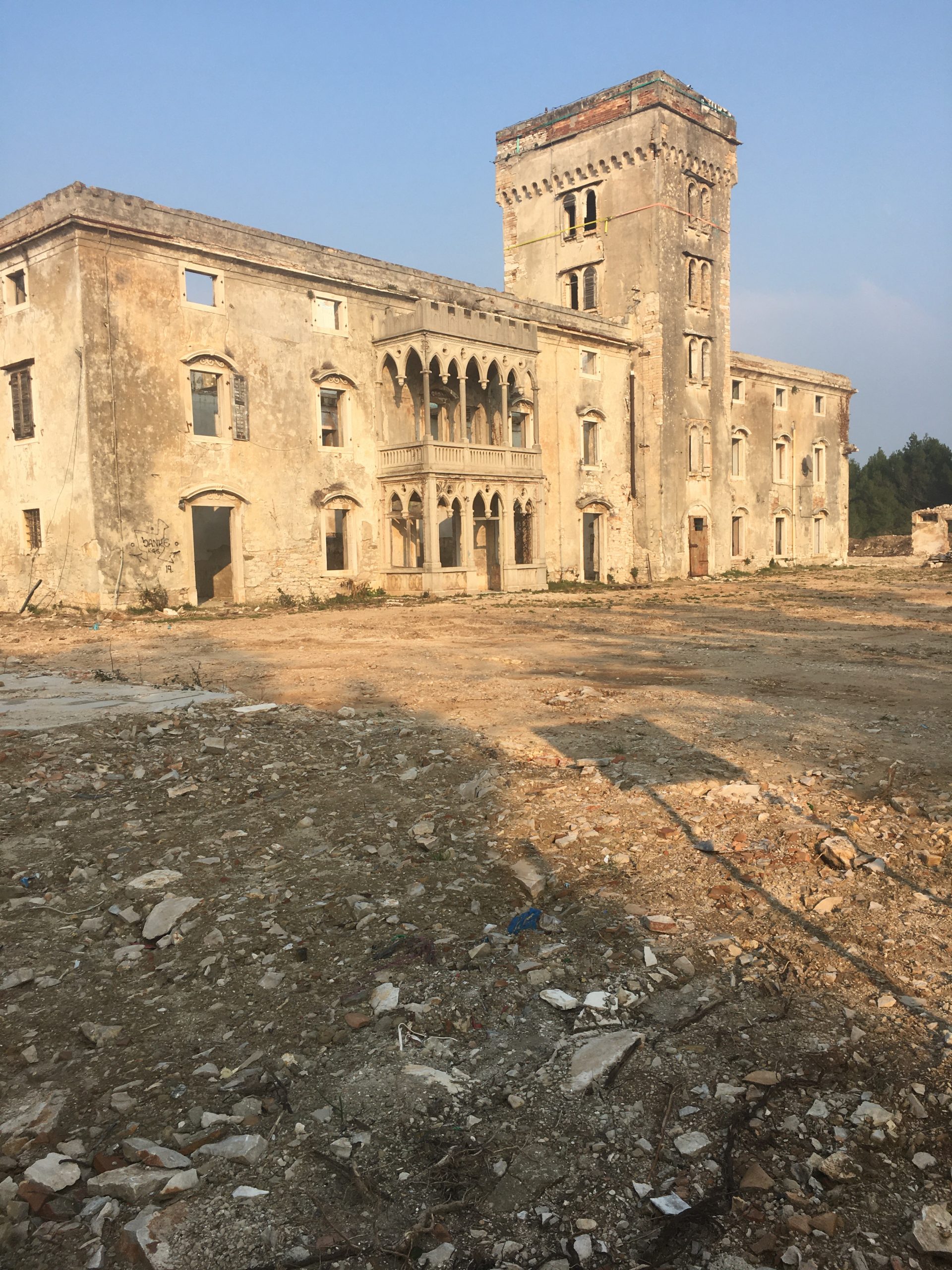A little bit of a different renovation tale today. One that is slightly more ambitious than the one we have embarked upon! When we’re out and about in Istria, we often stumble upon what we think are hidden treasures. Things that we think only we know about. Istria is a bit like this. Away from the coastal hot-spots and the famous inland medieval walled hill top towns, there are little villages, some mostly abandoned, hidden away. We never imagine that anyone else has discovered these half hidden treasures, and that we are the keeper of the secrets. Just after we moved to Istria, we found one such place. From a country road, nestled in the trees in the distance, we could see what looked like the turrets of a castle, so of course we had to investigate…

Up a an overgrown track, this beauty revealed itself. Although clearly not occupied, some of the adjacent properties were, so it definitely wasn’t the big secret we thought it was. We did manage to get quite close to it, and could see the unbelievable detailing and through certain windows, get glimpses inside. At some point it must have been very grand, but like many properties in Istria – even very majestic looking ones – it had obviously been left to be reclaimed by nature. But we were curious and after a big of digging around found out that it was known as Villa Cesare (also Stancija Grande), constructed as a villa with a country estate for a nobleman from Piran called Angelo Fabris, to be used for silkworm farming.
It was reconstructed and expanded in 1877 for Carlo Cesare, a ship-owner from Trieste, who extended the villa significantly, furnishing the western section of the building as his own residence, and leaving the eastern side for servants. In the centre of the building, he erected a high tower in the characteristic gotico quadrato style, inspired by the Miramare castle and the Lloyd Triestino arsenal building in Trieste. Cesare continually renovated the villa and organized a lavish pleasure garden. Unusually for the time, the Cesare family had running water in the house thanks to the free flow of water from the water tower, and their own electric generator for lighting and listening to the radio, all long before 1936, when electricity was brought to Savudrija, the nearest small harbour. Villa Cesare was taken over by the military during World War II, and since the 80s, left to fall into ruin.
But, we got quite a big surprise when we revisited recently. The whole area around the Villa, had been cleared of foliage, as well as the vines growing up and out of the Villa. The land at the front had been levelled and the whole estate fenced off. So, our interest was piqued again – what was happening with it? And, as usual, Google provided the answers…

It would seem that new life is now being breathed back into the beautiful building, with a very ambitious renovation project, which will have the restoration of its original grandeur at the heart of the project. The architectural integrity of the building, as well as its layout, will be preserved according to strict conservation regulations, with the estate seamlessly integrated into the landscape as whole. Investors plan to build an 18-hole golf course, a five star hotel with a capacity of 200 beds, and catering facilities. The crown jewel of the estate, is of course Villa Cesare, and it is reported that this will house the most luxurious accommodation units within the resort. It is hoped that the the conservation research of the estate will contribute to a better understanding of the 19th Century leisure architecture of Istria, which has been much neglected in comparison to similar architecture of Classical Antiquity and the Middle Ages. Reassuringly, the investment company has stated that this project has nothing to do with the mass-construction of apartments on the coast, and will be subject to the supervision of authorities that care for historical and cultural heritage. The architectural integrity of the building, as well as its layout, will be preserved according to strict conservation regulations, with the estate seamlessly integrated into the landscape as whole.
So, hopefully, a new era for for one of Istria’s beautiful abandoned villas…

